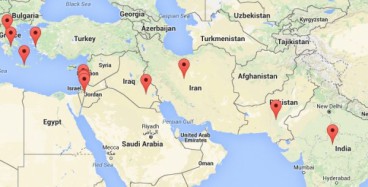Kuwait Institute for Scientific Research launches national geotechnical database

The Kuwait Institute for Scientific Research (KISR) has announced the development of a national geotechnical database, a strategic digital platform aimed at supporting Kuwait’s smart-city ambitions, enhancing infrastructure safety, and informing national engineering codes.
Engineer Dana Al‑Enezi, project lead at KISR’s Environment & Life Sciences Research Center, explained that the digital archive will collect, manage, and integrate geotechnical data, such as soil and rock properties, subsurface mapping, historical ground-movement records, and borehole logs—into a GIS-enabled repository to assist engineers, planners, and researchers across Kuwait.
The initiative addresses a long-standing infrastructure challenge; Kuwait currently lacks a unified subsurface database or detailed national mapping of soil conditions, a gap that has previously contributed to construction delays, repeated studies, and increased risk in large-scale urban projects.
In outlining the need for this database, Al-Enezi referenced the land subsidence events in Al-Dhaher during 1988–1989, noting how the absence of accessible, consolidated geotechnical records hampered swift crisis-response and remediation work. She emphasized that a permanent knowledge system is essential for major developments such as Al Mutlaa Residential City and the island infrastructure on Bubiyan Island, where complex soil conditions and seismic-sensitivity require high-fidelity data for foundation and geohazard design.
The geotechnical database is being positioned not just as a data archive but as an engineering decision tool. Its intended functionalities include: interactive maps of subsurface characteristics, rapid access to borehole and lab-test datasets, analysis tools to anticipate slope failure, liquefaction, or subsidence risks, and infrastructure-planning interfaces to support pipelines, foundations, tunnels, and drilling operations.
By institutionalizing this platform, Kuwait also intends to develop independent national engineering codes based on local soil dynamics and geotechnical behavior, reducing dependence on foreign codes and tailoring design guidelines to the Gulf’s subsurface architecture.
Source: Times Kuwait
Want to read more like this story?
2nd International Scientific and Practical Conference on Soil Mechanics, Geotechnics and Foundation Engineering
Sep, 04, 2025 | EventThe 2nd International Conference on Soil Mechanics, Geotechnics & Foundation Engineering (GEOMO...

Online Historical Database of Civil Infrastructure
Jun, 08, 2022 | Education

Fungible Engineering: The Future of Modular Design in Data Centers
Feb, 27, 2025 | NewsIn an era where speed, flexibility, and efficiency dictate the success of technological infrastruct...
Global geotechnical construction market forecast to grow at a CAGR of 6.1% till 2028
Apr, 29, 2022 | NewsThe global geotechnical construction services market is expected to grow from US$ 2,112.5 million i...
200 new geotechnical investigation and design software added to DCOdes
Jun, 28, 2023 | NewsTwo hundred new software regarding geotechnical design and investigation, many of which are availabl...

TheCivilengineer.org is very proud to introduce its Historical Civil Infrastructure Online Database
Feb, 05, 2016 | NewsThis unique Database consists of several projects, written by Civil Engineering students, that are o...
103 new geotechnical engineering software added to DCOdes
Sep, 22, 2023 | News103 new software regarding geotechnical engineering, many of which are available for free, have bee...

We are proud to announce the NEW GeoWorld platform
Mar, 16, 2017 | NewsGeoengineer.org, with the support of the International Society for Soil Mechanics and Geotechnical E...
International Conference on Advances and Innovations in Soft Soil Engineering 2026
Sep, 04, 2025 | EventAs global land development expands into coastal regions, offshore reclamation areas, and wetlands,...
Trending

Vertical gardens in Mexico City to combat pollution

Characteristics of Load Bearing Masonry Construction

Taipei 101’s impressive tuned mass damper

Dutch greenhouses have revolutionized modern farming

The Line at Neom faces feasibility reassessment while construction continues

The Line at Neom faces feasibility reassessment while construction continues

King Salman Gate unveiled adjacent to Mecca’s Grand Mosque

